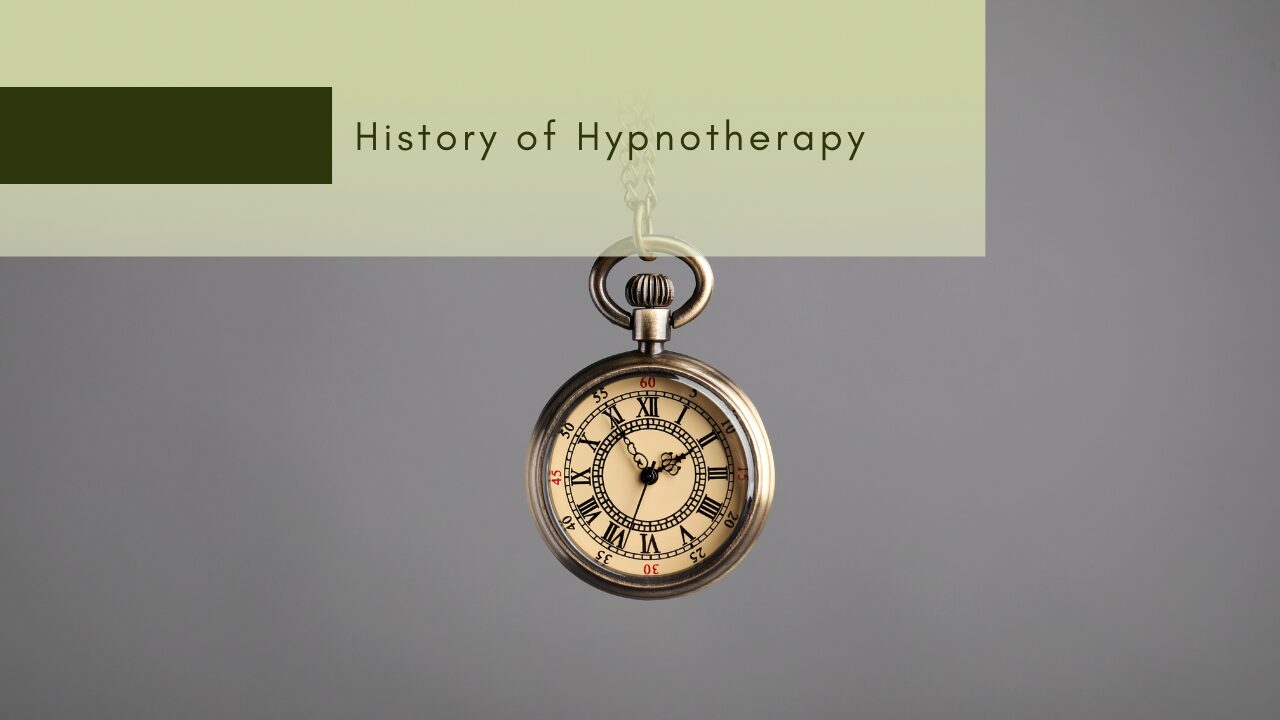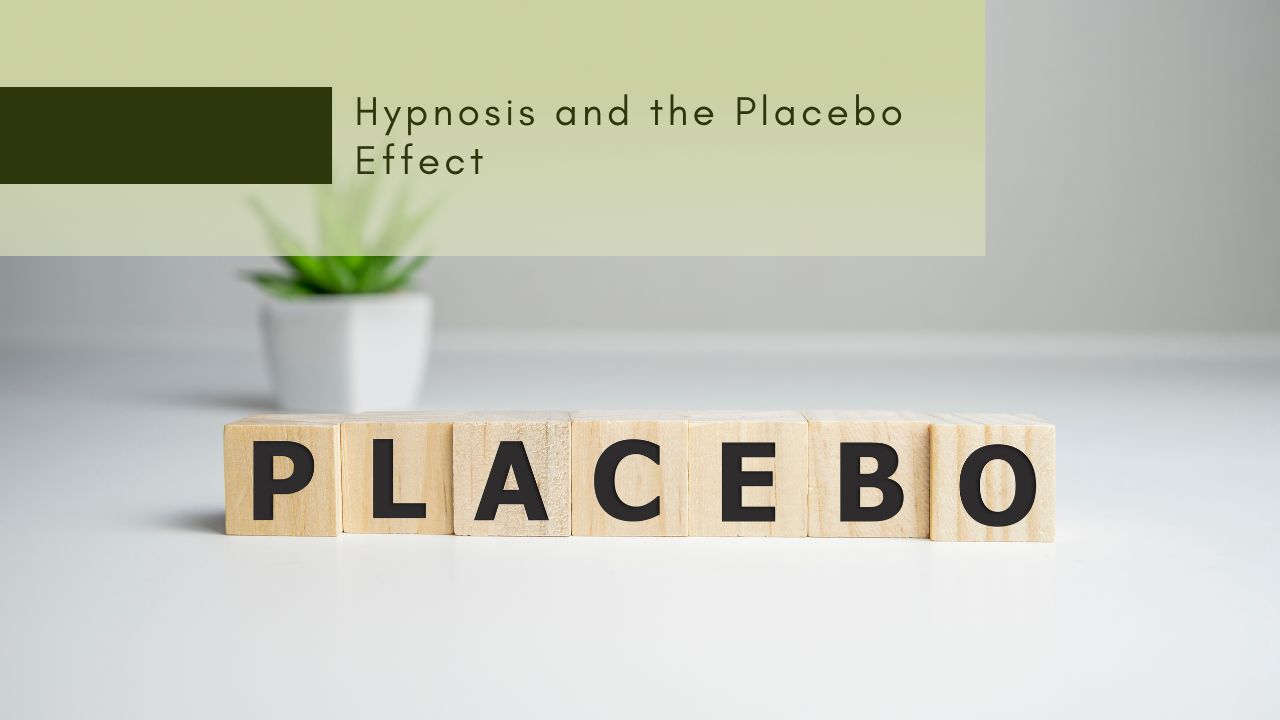Have you ever wondered if a simple suggestion could unlock the hidden potential of your mind? Hypnotherapy, the practice of using hypnosis for therapeutic purposes, has captivated imaginations for centuries. Its journey winds through ancient rituals, scientific breakthroughs, and moments of controversy.
In this blog, we’ll embark on a fascinating exploration of hypnotherapy’s history.
What were the earliest forms of hypnosis?
The earliest forms of hypnosis can be traced back to ancient civilisations such as the Egyptians, Greeks, and Romans, who used various techniques involving suggestion and trance-like states for healing purposes. One early form of hypnosis-like practice was temple sleep, where individuals would go to sleep in a temple in hopes of receiving healing or guidance from the gods.
Who were the key pioneers of hypnosis?
Several key pioneers have significantly contributed to the development and understanding of hypnosis throughout history. Some of the most notable figures include:
- Franz Mesmer (1734–1815): Mesmer is often regarded as one of the early pioneers of hypnosis. Although his theories about “animal magnetism” have been discredited, his work laid the groundwork for the later development of hypnosis.
- James Braid (1795–1860): Braid is considered the “Father of Modern Hypnotism.” He coined the term “hypnosis” and shifted the focus away from Mesmer’s magnetic fluid theory towards the power of suggestion and psychological processes in inducing trance states.
- Émile Coué (1857–1926): Coué was a French pharmacist and psychologist who developed the concept of “autosuggestion.” He believed that individuals could improve their well-being and overcome various issues by repeating positive affirmations to themselves. Coué’s method became known as “Couéism” and had a significant influence on the development of hypnotherapy.
- Sigmund Freud (1856–1939): Although Freud is primarily known for his contributions to psychoanalysis, he also made significant contributions to the understanding of hypnosis. Freud initially used hypnosis in his clinical practice but later developed psychoanalytic techniques that focused on exploring the unconscious mind without the use of trance states.
- Milton H. Erickson (1901–1980): Erickson was an American psychiatrist and psychologist who is widely regarded as one of the most influential figures in the field of hypnosis. He developed innovative hypnotic techniques, such as indirect suggestion and utilization, and his work laid the foundation for modern Ericksonian hypnotherapy.
These pioneers, among others, have played crucial roles in shaping the theory, practice, and scientific understanding of hypnosis over the centuries.
How did the understanding of hypnosis change over time?
The understanding of hypnosis has evolved significantly over time, reflecting changes in scientific knowledge, cultural attitudes, and therapeutic practices. The following is a brief overview of how the understanding of hypnosis has changed over different periods:
- Early History: In ancient civilszations, hypnosis-like practices were often attributed to mystical or religious phenomena. These early forms of hypnosis involved rituals, suggestion, and trance states for healing purposes. However, the conceptualisation of hypnosis as we understand it today began to emerge in the 18th and 19th centuries with figures like Franz Mesmer and James Braid.
- Mesmerism: Franz Mesmer’s theory of “animal magnetism” dominated the early understanding of hypnosis. Mesmer believed that there was a magnetic fluid flowing through the body, and he used techniques such as passes and magnetic objects to induce trance states in his patients. However, Mesmerism fell out of favor as it lacked scientific validity.
- Psychological Era: James Braid’s work marked a shift towards a more psychological understanding of hypnosis. Braid coined the term “hypnosis” and focused on the power of suggestion and mental processes in inducing trance states. He emphasised the role of suggestibility and dissociation in hypnosis, laying the foundation for modern hypnotic theory.
- Psychoanalytic Influence: Sigmund Freud initially used hypnosis in his clinical practice but later developed psychoanalytic techniques that explored the unconscious mind without relying on trance states. Freud’s theories influenced the understanding of hypnosis as a tool for accessing and exploring unconscious processes.
- Ericksonian Hypnotherapy: Milton H. Erickson revolutionised the practice of hypnotherapy in the 20th century with his innovative approaches. Erickson emphasised the importance of individualised techniques tailored to the unique needs of each client. His work expanded the therapeutic applications of hypnosis and emphasized the role of unconscious communication and utilization.
- Cognitive and Neuroscientific Perspectives: In more recent years, advances in cognitive psychology and neuroscience have provided new insights into the mechanisms underlying hypnosis. Researchers have used brain imaging techniques to study neural correlates of hypnosis and have explored cognitive processes such as attention, expectancy, and suggestibility. This scientific approach has contributed to a more evidence-based understanding of hypnosis as a psychological phenomenon.
Overall, the understanding of hypnosis has evolved from mystical and pseudoscientific beliefs to a more nuanced and scientifically informed perspective grounded in psychological principles and empirical research.
What major controversies surrounded hypnosis historically?
Historically, hypnosis has been surrounded by several controversies, reflecting debates over its nature, efficacy, and ethical implications. Some of the major controversies include:
- Scientific Validity: Throughout its history, hypnosis has faced skepticism and controversy regarding its scientific validity. Critics have questioned whether hypnosis represents a distinct altered state of consciousness or simply involves suggestibility and social compliance. While research has demonstrated the effectiveness of hypnosis for certain applications, such as pain management and habit modification, debates continue over its underlying mechanisms and the extent of its therapeutic benefits.
- Ethical Concerns: Hypnosis has raised ethical concerns, particularly regarding issues of control, suggestibility, and the potential for misuse. There have been cases of unethical or exploitative uses of hypnosis, such as the manipulation of vulnerable individuals or the implantation of false memories. Ethical guidelines and professional standards have been established to address these concerns and ensure the responsible practice of hypnosis within therapeutic settings.
- Legal Issues: Hypnosis has been involved in legal controversies, particularly regarding the reliability of hypnotically induced testimony and the potential for false memories. Courts have grappled with questions about the admissibility and credibility of hypnotically refreshed memories in legal proceedings, recognising the risk of suggestibility and confabulation associated with hypnosis.
- Cultural and Religious Opposition: Hypnosis has faced opposition from certain cultural and religious groups who view it as occult or spiritually dangerous. Historical associations with mesmerism and trance-like states have contributed to perceptions of hypnosis as a mysterious or supernatural phenomenon. Despite efforts to demystify hypnosis and promote its scientific understanding, cultural biases and misconceptions persist in some communities.
- Professional Disputes: Within the field of hypnotherapy, there have been disputes over competing approaches, methodologies, and training standards. Different schools of thought, such as traditional hypnosis, Ericksonian hypnotherapy, and cognitive-behavioral hypnotherapy, have their own theories and techniques, leading to debates over the most effective and ethical practices.
Overall, the controversies surrounding hypnosis reflect broader debates over the intersection of psychology, neuroscience, ethics, and culture. While hypnosis continues to be a subject of fascination and inquiry, ongoing research and dialogue are essential for addressing its controversies and advancing our understanding of its potential benefits and limitations.
How did the acceptance of hypnosis as legitimate evolve?
The acceptance of hypnosis as a legitimate phenomenon has evolved over time through a combination of scientific research, clinical evidence, cultural shifts, and changes in professional attitudes. The following are some key factors that have contributed to the increasing acceptance of hypnosis:
- Scientific Exploration: Advances in psychology and neuroscience have led to a more systematic investigation of hypnosis as a psychological phenomenon. Researchers have conducted numerous studies examining the efficacy, mechanisms, and applications of hypnosis, providing empirical evidence to support its effectiveness for various purposes, including pain management, anxiety reduction, and habit modification.
- Clinical Validation: Hypnosis has gained acceptance within the medical and therapeutic communities through its successful application in clinical settings. Many healthcare professionals, including psychologists, psychiatrists, and medical doctors, have integrated hypnosis into their practice as a complementary therapy for treating a wide range of conditions, such as chronic pain, trauma, and addiction.
- Professional Standards: The establishment of professional organiszations, such as the American Society of Clinical Hypnosis (ASCH) and the British Society of Clinical Hypnosis (BSCH), has helped to promote standards of training, practice, and ethical conduct within the field of hypnotherapy. These organisations provide certification programs, guidelines, and continuing education opportunities for practitioners, enhancing the credibility and professionalism of hypnosis as a therapeutic modality.
- Cultural Shifts: As attitudes towards alternative and complementary therapies have evolved, hypnosis has become increasingly accepted as a legitimate approach to health and wellness. Mainstream media, popular culture, and entertainment have also played a role in demystifying hypnosis and portraying it in a more positive light, thereby reducing stigma and misconceptions surrounding the practice.
- Integration into Healthcare Systems: Hypnosis has been integrated into mainstream healthcare systems in many countries, with some hospitals and clinics offering hypnotherapy services as part of their treatment options. The inclusion of hypnosis in clinical practice guidelines and recommendations by professional healthcare associations has further legitimised its use as a therapeutic intervention.
What events or factors shaped perceptions of hypnosis?
Perceptions of hypnosis have been shaped by a variety of events and factors throughout history, including scientific discoveries, cultural influences, media representations, and therapeutic practices. The following are some key events and factors that have played a significant role in shaping perceptions of hypnosis:
- Mesmerism and Animal Magnetism: The work of Franz Mesmer in the 18th century, with his theory of “animal magnetism” and the practice of mesmerism, laid the foundation for modern hypnosis. Mesmer’s dramatic demonstrations and claims of healing through magnetic manipulation captured public attention and contributed to both fascination and skepticism about hypnosis.
- James Braid’s Hypnotism: James Braid, a Scottish surgeon, coined the term “hypnotism” in the 19th century and proposed a more psychological explanation for hypnotic phenomena. Braid’s emphasis on the role of suggestion and mental processes shifted perceptions of hypnosis away from Mesmer’s mystical theories and towards a more scientific understanding.
- Stage Hypnosis and Entertainment: Stage hypnotists in the 19th and 20th centuries, such as Ormond McGill and Milton Erickson, popularized hypnosis as entertainment. Their performances, often featuring seemingly extraordinary feats of suggestibility and control, shaped public perceptions of hypnosis as a mysterious and powerful phenomenon, although they sometimes reinforced misconceptions about its nature.
- Psychoanalytic Influence: Sigmund Freud’s early use of hypnosis in psychoanalysis and subsequent development of psychoanalytic techniques contributed to perceptions of hypnosis as a tool for exploring the unconscious mind. Freud’s theories about the role of unconscious processes and repressed memories influenced both the therapeutic use of hypnosis and cultural depictions of hypnotic phenomena.
- Clinical Applications: The therapeutic applications of hypnosis in medicine and psychology have played a significant role in shaping perceptions of its legitimacy and effectiveness. Clinical research and case studies demonstrating the utility of hypnosis for pain management, anxiety reduction, and behavior change have helped to establish its credibility as a therapeutic intervention.
- Scientific Research: Advances in psychology and neuroscience have contributed to a more scientific understanding of hypnosis and its underlying mechanisms. Research studies using brain imaging techniques and experimental paradigms have provided insights into the neural correlates and cognitive processes involved in hypnotic phenomena, influencing perceptions of hypnosis as a natural and measurable phenomenon.
- Cultural and Media Representations: Depictions of hypnosis in literature, film, and popular culture have both reflected and shaped public perceptions of the practice. While hypnosis has often been portrayed inaccurately or sensationalistically in media, more nuanced and realistic portrayals have helped to demystify hypnosis and promote awareness of its potential benefits.
Overall, perceptions of hypnosis have been shaped by a complex interplay of historical events, scientific discoveries, cultural influences, and therapeutic practices. While misconceptions and controversies persist, ongoing research and education continue to contribute to a more informed and nuanced understanding of hypnosis as a legitimate and valuable tool for promoting health and well-being.
How did hypnosis intersect with other fields like psychology?
Hypnosis has intersected with various fields, including psychology, psychiatry, neuroscience, medicine, and even anthropology. The following aspects indicate how hypnosis has intersected with psychology in particular:
- Early Psychological Research: Hypnosis played a significant role in the development of psychology as a scientific discipline. In the late 19th and early 20th centuries, psychologists such as William James, Pierre Janet, and Clark Hull conducted research on hypnotic phenomena, exploring topics such as suggestibility, dissociation, and altered states of consciousness. This early research contributed to the understanding of hypnosis as a psychological phenomenon and its potential applications in therapy.
- Psychoanalysis and Hypnosis: Sigmund Freud initially used hypnosis as a therapeutic technique in his clinical practice before developing psychoanalytic methods. While Freud eventually moved away from hypnosis in favor of free association and dream analysis, his early work with hypnosis influenced his theories about the unconscious mind and the role of suggestion in therapy. Hypnosis also remained an important tool in the work of other psychoanalysts, such as Carl Jung and Milton H. Erickson.
- Behaviorism and Hypnosis: Behaviorist psychologists, such as Ivan Pavlov and B.F. Skinner, had differing views on hypnosis. While some behaviorists were skeptical of hypnosis due to its subjective nature and lack of observable behaviour, others, such as Hull, incorporated hypnotic techniques into their research on conditioning and learning. Hypnosis also intersected with behavior therapy, with practitioners using hypnotic methods for behavior modification and desensitization.
- Cognitive Psychology and Hypnosis: In the latter half of the 20th century, cognitive psychologists began to study hypnosis from a cognitive-behavioral perspective, focusing on the cognitive processes underlying hypnotic phenomena. Researchers explored topics such as attentional processes, expectancy effects, and cognitive control during hypnosis, contributing to a deeper understanding of how hypnosis works and its therapeutic applications.
- Clinical Hypnosis: Hypnosis has been integrated into clinical psychology as a therapeutic tool for addressing various psychological and behavioral issues. Clinical psychologists use hypnosis for purposes such as treating phobias, managing stress and anxiety, alleviating chronic pain, and enhancing performance. The practice of clinical hypnosis often draws on techniques from cognitive-behavioral therapy, mindfulness, and Ericksonian hypnotherapy.
Overall, hypnosis has intersected with psychology in numerous ways, influencing theoretical perspectives, research methodologies, and therapeutic approaches. While hypnosis remains a subject of ongoing scientific inquiry and debate within psychology, its integration into the field has enriched our understanding of consciousness, suggestibility, and the mind-body connection.
What were major milestones or breakthroughs in hypnosis?
Several major milestones and breakthroughs have occurred in the history of hypnosis, shaping its development as a field of study and therapeutic practice. Here are some significant milestones:
- Franz Mesmer and Animal Magnetism (late 18th century): Franz Mesmer’s work with “animal magnetism” laid the groundwork for modern hypnosis. Although Mesmer’s theories were later discredited, his use of trance-like states and suggestion for therapeutic purposes sparked interest in the potential psychological and physiological effects of hypnosis.
- James Braid and the Discovery of Hypnotism (early 19th century): James Braid, a Scottish surgeon, coined the term “hypnotism” and conducted extensive research on hypnotic phenomena. Braid’s experiments and writings contributed to a more scientific understanding of hypnosis as a psychological state induced by suggestion and focused attention, rather than a magnetic fluid as proposed by Mesmer.
- Development of Hypnotherapy Techniques (late 19th to early 20th century): Hypnosis became increasingly recognised as a therapeutic tool, with clinicians like Jean-Martin Charcot and Hippolyte Bernheim using hypnosis in the treatment of various medical and psychological conditions. This era saw the development of hypnotherapy techniques for addressing symptoms such as pain, hysteria, and trauma.
- Freud’s Use of Hypnosis in Psychoanalysis (late 19th to early 20th century): Sigmund Freud initially used hypnosis as a therapeutic technique in his clinical practice, employing it to explore the unconscious mind and access repressed memories in his patients. Although Freud eventually moved away from hypnosis in favor of free association and dream analysis, his early work with hypnosis influenced his theories about the unconscious and psychosexual development.
- Ericksonian Hypnotherapy (20th century): Milton H. Erickson, an American psychiatrist, developed innovative approaches to hypnotherapy that emphasised the importance of individualised techniques and indirect suggestion. Erickson’s work, characterized by his use of metaphor, storytelling, and therapeutic utilisation, revolutionised the practice of hypnosis and expanded its therapeutic applications.
- Integration of Hypnosis into Clinical Practice (20th century): Hypnosis became increasingly integrated into mainstream medicine and psychology, with growing acceptance of its therapeutic efficacy for conditions such as chronic pain, anxiety disorders, and smoking cessation. Professional organisations, certification programs, and research initiatives further contributed to the recognition of hypnosis as a legitimate and effective therapeutic intervention.
These milestones represent significant advances in the understanding and application of hypnosis, shaping its evolution as a respected field of study and practice within psychology and medicine.
How did theoretical approaches to hypnosis diverge?
Theoretical approaches to hypnosis have diverged over time, reflecting different perspectives on the nature, mechanisms, and therapeutic applications of hypnosis. The following are some of the main theoretical approaches:
- State Theory: State theorists view hypnosis as an altered state of consciousness characterized by heightened suggestibility, absorption, and dissociation from ordinary awareness. According to this perspective, hypnosis involves a distinct psychological state induced by hypnotic induction techniques, such as relaxation, focused attention, and suggestion. State theorists emphasise the role of trance-like states in facilitating hypnotic phenomena and therapeutic change.
- Non-State Theories: Non-state theorists argue that hypnosis does not involve a unique or special state of consciousness but rather represents an extension of everyday psychological processes, such as imagination, expectancy, and social influence. Non-state approaches propose that hypnotic responses result from individual differences in cognitive strategies, beliefs, and attitudes, rather than from an altered state of consciousness per se. Non-state theorists emphasise the role of context, motivation, and interpersonal dynamics in shaping hypnotic experiences and outcomes.
- Sociocognitive Theory: Sociocognitive theorists integrate elements of both state and non-state perspectives, emphasizing the interplay between social, cognitive, and contextual factors in shaping hypnotic phenomena. According to this view, hypnosis involves a combination of suggestibility, social influence, and cognitive reinterpretation, with individuals adopting hypnotic roles and expectations within a social context. Sociocognitive theorists highlight the importance of social modeling, rapport, and interpersonal dynamics in eliciting hypnotic responses and therapeutic effects.
- Ericksonian Approaches: Ericksonian hypnotherapy, developed by Milton H. Erickson, represents a unique theoretical and therapeutic approach to hypnosis. Erickson emphasized the importance of individualised techniques, indirect suggestion, and therapeutic utilisation, tailoring interventions to the unique needs and experiences of each client. Ericksonian approaches draw on principles of storytelling, metaphor, and strategic ambiguity to bypass resistance and facilitate therapeutic change.
- Cognitive-Behavioral Approaches: Cognitive-behavioral therapists integrate hypnosis into cognitive-behavioral therapy (CBT) techniques, using hypnotic methods to enhance cognitive restructuring, relaxation, and exposure-based interventions. Cognitive-behavioral approaches to hypnosis emphasise the role of cognitive processes, such as attention, expectation, and self-regulation, in producing therapeutic change. These approaches focus on modifying maladaptive cognitions and behaviors through hypnotic suggestion and imagery.
Overall, theoretical approaches to hypnosis reflect a diverse range of perspectives, drawing on concepts and methods from psychology, neuroscience, sociology, and clinical practice. While there is ongoing debate and controversy surrounding the nature of hypnosis, these theoretical frameworks provide valuable insights into the mechanisms and applications of hypnosis as a psychological phenomenon and therapeutic tool.
What famous cases or experiments impacted its history?
Several famous cases and experiments have played significant roles in the history of hypnotherapy, highlighting its potential applications and therapeutic effects. The following are some notable examples:
- The Case of Anna O. (Bertha Pappenheim): Although not directly related to hypnotherapy, the case of Anna O., treated by Josef Breuer and later discussed by Sigmund Freud, marked an early example of psychotherapeutic techniques that influenced the development of hypnosis. Breuer used cathartic talking therapy and hypnosis to help Anna O. recover from symptoms of hysteria, demonstrating the potential of hypnosis and suggestion in treating psychological disorders.
- The Salpêtrière School and Charcot’s Hysteria Studies: Jean-Martin Charcot, a French neurologist, conducted influential studies on hysteria and hypnosis at the Salpêtrière Hospital in Paris in the late 19th century. Charcot used hypnosis to induce hysterical symptoms in patients, exploring the role of suggestion and dissociation in the manifestation of psychological disorders. Although Charcot’s methods and interpretations have been criticised, his work contributed to the understanding of hypnosis and its therapeutic applications.
- The Stanford Hypnotic Susceptibility Scales: Ernest Hilgard, a prominent hypnosis researcher, developed the Stanford Hypnotic Susceptibility Scales in the 1950s to measure individual differences in hypnotic responsiveness. These standardized scales, which assess suggestibility and hypnotic phenomena across various domains, have been widely used in research on hypnosis and personality.
- The Harvard Group Scale of Hypnotic Susceptibility: Martin Orne and colleagues developed the Harvard Group Scale of Hypnotic Susceptibility in the 1960s as an alternative measure of hypnotic responsiveness. This group-administered scale assesses hypnotic suggestibility and trance-like experiences in a social context, providing insights into the dynamics of group hypnosis and suggestibility.
- The Use of Hypnosis in Pain Management: Numerous studies have examined the effectiveness of hypnosis in reducing pain and enhancing pain management. One famous case is that of Arreed Barabasz, who used hypnosis to undergo surgery without anesthesia in the 1970s, demonstrating the potential of hypnosis as an adjunctive analgesic technique.
- The Work of Milton H. Erickson: Milton H. Erickson, an influential psychiatrist and hypnotherapist, conducted numerous case studies and experiments that showcased the effectiveness of his innovative approaches to hypnotherapy. Erickson’s use of indirect suggestion, metaphor, and therapeutic utilisation has inspired generations of hypnotherapists and contributed to the development of Ericksonian hypnotherapy.
These cases and experiments illustrate the diverse applications and therapeutic potential of hypnotherapy, from the treatment of psychological disorders to pain management and beyond. They have helped to shape our understanding of hypnosis as a valuable tool for promoting health and well-being.
How did legal/ethical issues around hypnosis develop?
Legal and ethical issues surrounding hypnosis have evolved over time as the practice has become more widespread and integrated into various fields, including medicine, psychology, and entertainment. The following are some key developments in the legal and ethical landscape of hypnosis:
- Regulation and Professional Standards: As hypnosis gained acceptance as a therapeutic modality, professional organizations and regulatory bodies began to establish guidelines and standards of practice for hypnotherapists. These standards typically address issues such as informed consent, client confidentiality, professional competence, and ethical conduct. Organisations like the American Society of Clinical Hypnosis (ASCH) and the British Society of Clinical Hypnosis (BSCH) provide certification programs and ongoing training to ensure that practitioners adhere to ethical standards.
- Informed Consent: Informed consent is a fundamental ethical principle in hypnotherapy, requiring practitioners to fully inform clients about the nature of hypnosis, its potential risks and benefits, and the proposed course of treatment. Clients must voluntarily consent to undergo hypnosis and have the right to withdraw consent at any time. Practitioners are also required to obtain consent for recording sessions, sharing information with other professionals, and disclosing relevant information to third parties.
- Vulnerable Populations: Ethical considerations arise when working with vulnerable populations, such as children, individuals with intellectual disabilities, or those who are highly suggestible. Hypnotherapists must exercise caution and sensitivity when working with these clients, ensuring that they have the capacity to understand and consent to treatment. Special precautions may be necessary to protect the rights and well-being of vulnerable clients, including obtaining consent from legal guardians and providing appropriate safeguards against exploitation or harm.
- False Memory Controversy: Hypnosis has been implicated in cases involving the retrieval of memories, particularly in the context of forensic investigations or therapy for trauma. However, the use of hypnosis to recover memories has raised concerns about the reliability and accuracy of hypnotically refreshed testimony, as well as the potential for suggestion and confabulation. Courts and professional organisations have established guidelines for the admissibility of hypnotically refreshed memories in legal proceedings, emphasizing the need for corroboration and safeguards against contamination.
- Therapeutic Boundaries and Dual Relationships: Ethical guidelines for hypnotherapy emphasize the importance of maintaining clear boundaries and avoiding dual relationships with clients. Hypnotherapists are expected to establish professional boundaries, maintain confidentiality, and avoid conflicts of interest that could compromise the therapeutic relationship. This includes refraining from engaging in sexual or financial relationships with clients and disclosing any potential conflicts of interest to ensure transparency and trust.
Overall, the development of legal and ethical standards for hypnosis reflects efforts to protect the rights and well-being of clients, promote professional integrity, and maintain public trust in the practice of hypnotherapy. By adhering to these standards, practitioners can ensure that hypnosis is used responsibly and ethically to facilitate positive therapeutic outcomes.
What are current perspectives building on its history?
Current perspectives on hypnotherapy continue to build upon its rich history while integrating advances in psychology, neuroscience, and evidence-based practice.The following are some key themes and perspectives shaping contemporary hypnotherapy:
- Integrative and Eclectic Approaches: Many contemporary hypnotherapists embrace integrative and eclectic approaches that draw on a variety of therapeutic modalities and techniques. Rather than adhering strictly to one theoretical orientation, practitioners may incorporate elements of cognitive-behavioral therapy, mindfulness, psychodynamic therapy, and other approaches into their hypnotherapeutic interventions. This integrative approach allows therapists to tailor treatment to the unique needs and preferences of each client, enhancing flexibility and effectiveness.
- Evidence-Based Practice: There is a growing emphasis on evidence-based practice in hypnotherapy, with practitioners relying on research findings and empirical evidence to inform their clinical decisions. Meta-analyses and systematic reviews have supported the efficacy of hypnosis for various conditions, such as chronic pain, anxiety disorders, and irritable bowel syndrome. Hypnotherapists strive to integrate the best available evidence into their practice, using validated assessment tools, standardised protocols, and outcome measures to monitor progress and evaluate treatment effectiveness.
- Mind-Body Integration: Contemporary hypnotherapy recognises the interconnectedness of mind and body, emphasizing the role of psychological factors in influencing physical health and well-being. Therapists may use hypnosis to promote relaxation, stress reduction, and self-regulation, thereby enhancing the body’s natural healing mechanisms. Mindfulness-based approaches, guided imagery, and somatic experiencing techniques may be integrated with hypnosis to facilitate mind-body integration and holistic healing.
- Trauma-Informed Practice: Hypnotherapy has become increasingly trauma-informed, recognizing the prevalence and impact of trauma on mental health and functioning. Therapists take into account the complex effects of trauma on the brain, nervous system, and emotional regulation, employing gentle and non-invasive approaches to facilitate healing and resilience. Hypnotherapists may use techniques such as ego-strengthening, resourcing, and trauma processing within a safe and supportive therapeutic environment.
- Ethical and Professional Standards: Hypnotherapy continues to uphold ethical and professional standards to ensure the safety, dignity, and autonomy of clients. Practitioners adhere to codes of conduct, guidelines, and regulations established by professional organisations and regulatory bodies, maintaining confidentiality, informed consent, and respect for client autonomy. Continuous professional development and supervision are emphasised to enhance competence, accountability, and ethical practice.
Overall, contemporary perspectives on hypnotherapy reflect an integration of traditional wisdom, scientific evidence, and innovative approaches to promote healing, growth, and transformation. By building upon hypnotherapy’s history while embracing new developments and insights, practitioners can continue to serve the diverse needs of clients and contribute to the advancement of the field.




